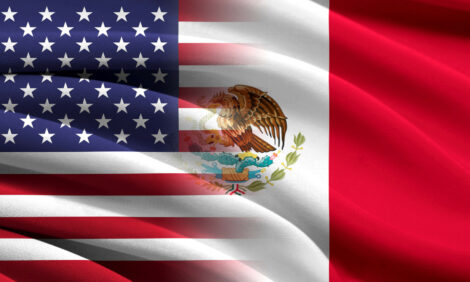



China Hog Markets
CHINA - Looking at the size of the breakdown of the inventory for November 2011, breeding stock was around 49.05 million and total on farm inventory was around 476.25 million (as compared to October 2011, breeding stock was around 48.80 million and total on farm inventory was around 475.16 million and to September at 48.1 million and total on farm inventory was about 465.57 million), writes Ron Lane, Senior Consultant for Genesus in China.The 476.25 million head for November is up 2.82 per cent from last year while the November sow inventory is up 2.01 per cent from last year (year over year). Sow inventory has increased for seven consecutive months. The 2011 total farm inventory is up about 4.9 per cent or over 22.5 million head versus 2010. For 2012, total farm inventory is projected to increase by 5 to 6 per cent.
Profit margins continue to show good returns. Current profit margins are flat with December at 518 RMB/market pig-$ 82.22 US. Estimated profit margin for June 2011, was around 770 RMB/market pig -$119.10 US and was the peak price. Profit margin for August was estimated to be 721 RMB/market pig -$112.83 US. Profit margin for October was estimated to be 659 RMB/market pig -$103.62 US. Profit margin for November was estimated to be 447 RMB/market pig -$ 70.06 US.
| Price | Feb. 2012 | Feb. 2011 | % increase year-on-year |
|---|---|---|---|
| Pig price | 17.07 RMB/kg ($2.71 US/kg) | 14.30 RMB/kg ($2.27 US/kg) | 19.4% |
| Pork price | 26.60 RMB/kg ($4.22 US/kg) | 22.80 RMB/kg ($3.62 US/kg) | 16.7% |
| Piglet price | 31.54 RMB/kg ($5.01 US/kg) | 17.76 RMB/kg ($2.82 US/kg) | 77.6% |
| Sow price | 1,789 RMB/head ($283.97 US/head) | 1445 RMB/head ($229.37 US/head) | 23.8% |
Price /profit predictions for 2012 include: pig price of 16.6 RMB/kg liveweight ($ 2.60 US/kg liveweight); average price of corn at 2,500 RMB/tonne ($ 391.85 US/tonne); pig and corn ratio of 6.93: 1 and average profit of 350 RMB/market pig ($ 54.86 US/ market pig).
In 2011, the national average live pig purchase price was 17.1 RMB/kg ($ 2.71 US/kg) up 45 per cent from 2010. September, 2011 with an average monthly price of 20.0 RMB/kg ($ 3.17 US/kg) was the peak price; whereas, November at 16.0 RMB/kg ($ 2.54 US/kg) was the lowest monthly average.
The December, 2011 average carcass price from large scale slaughterhouses was 22.96 RMB/kg ($ 3.64 US/kg). Data from the large cities in China showed the average live hog purchase price to be 17.01 RMB/kg ($ 2.70 US/kg). The price difference between meat price and live purchase price is 5.95 RMB/kg ($ 0.94 US/kg). Live hog slaughtering profit slightly decreased to 170 RMB/head ($ 26.98 US/head).
In November, China imported over 75,400 MT of both fresh and frozen pork (an increase of 41.9 per cent from the previous month and up 2.1 times from November 2010). The average pork CIF price was 13,230 RMB/MT ($2,100 US/MT). This is up 5607 RMB/MT ($ 870 US/MT) from November 2010. From January to November 2011, China’s total pork meat imports were 378,200 MT., up 120 per cent year on year. The principal sources for imports come from: USA (203,008 MT- 53.7 per cent of the total); Denmark (49,500 MT-13.1 per cent of the total); Canada (41,521 MT-11.0 per cent of the total), Spain (36,143 MT-9.6 per cent of the total) and France (22,569 MT-6.0 per cent of the total). Imports from the US are up 980 per cent from last year.
What to watch for over the next few months!!!
- In February, 2011, the pig and corn ratio was 7.12:1; was 7.07:1 for March and was 7.63:1 for May. In September, the ratio was 8.24:1 and in October, the ratio was lower to 7.45:1 per market pig. In November, 2011, a pig to corn ratio of 7.42:1 was shown. For January, 2012, a 7.79:1 ratio is calculated. A pig to corn ratio of 6:1 is considered to be break even. With continued Government incentives and "now reasonable profit margins", pig expansion in China will continue.
- The Consumer Price Index (CPI) continues to be quite interesting for the National Government. Previously, when the pork prices were gaining, this rapid increase in pork, gained the attention of the National Government as it greatly affects the CPI. The CPI is made up of about 30 per cent food found in the consumers’ basket. Pork is estimated to be about 1/3 of the food portion of the basket or in other words, about 10 per cent of CPI as a whole. Currently, inflation is around 4.5 per cent for January, 2012. This is a drop from the high of 6.5 per cent in July (37 month high). CPI for November was 4.2 per cent and was 4.1 per cent for December. Food prices increased by 10.5 per cent in January compared with one year ago. Pork, China’s staple meat source soared 25 per cent year on year in January. The main factor for the CPI increase is related to the Chinese Lunar New Year in late January. Analysts expect that the CPI will pull back in February to about 3 to 3.5 per cent. Food prices that represent 1/3 of the CPI basket contributed to 3.29 per cent of the total portion of inflation in January.
- IMF cut its forecast for China’s GDP growth for 2012 to 8.25 per cent from 9 per cent projected in September 2011.
- According to the news website of the Ministry of Industry, Ministry of Agriculture, Ministry of Commerce, Ministry of Health, SAIC, General Administration of Quality Supervision, Inspection and Quarantine (AQSIQ), the six ministries jointly issued a notice to announce the banning of the production and sale of ractopamine. Commonly known as "lean", ractopamine (or often called clenbuterol) can increase the growth rate of the muscle tissue. Farmers have used clenbuterol before and on March 15th, 2011, China’s largest meat processor, Shuanghui (Shineway Meats) sold pork that contained clenbuterol. The illegal use of clenbuterol had a limited effect on current live hog market prices, but its use will have a long term effect on food safety measures. As early as 2009, the Commerce Department issued a notice to prohibit the import and export of ractopamine and ractopamine hydrochloride. (BEIJING, Commercials, 23 December 2011)
- Wuhan Municipal Price Bureau (February, 2012) released the hog cost data for the second half of 2011. A survey of 23 pig farmers, estimated that per head net profit was 311.85 RMB ($ 49.50 US/pig). The Bureau also predicts that, with the hog market supply and demand changes in the first half of 2012, pork prices will drop slightly.
- The national average corn price for 2011 was 2.30 RMB/kg ($0.365 US/kg). This is up 0.30 RMB ($ 0.048 US/kg) or 15 per cent from 2010. Since 2009, average corn price is up 60 per cent. New corn entering the market and with total corn output calculated, then it is predicted that total available corn for consumption to increase by about 8 per cent over last year. From this current corn prices have declined recently from 2.6 RMB/kg ($ 0.413 US/kg) to 2.35 RMB/kg ($ 0.373 US/kg). It is expected that average corn prices will generally trend upwards through 2012.
- China’s grain output in 2011 climbed to a record high of 571.21 million tonnes, up 4.5 per cent year-on-year. This is the eight consecutive year of upward growth (National Bureau of Statistics). The 3 major grains- corn, wheat and rice – hit 510 million tonnes this year. It was predicted that the country's grain output would reach a record high of more than 550 million tonnes this year. Experts suggest that the growth of China's grain output may not continue this year. Factors such as limited farmland and application of technology along with climate change can have a large impact of the sustained growth in yield.
- According to the Ministry of Agriculture, scaled pig production (greater than 500+ finishers per year) now accounts for 34 per cent of the total output of pig production in China. Pig farming by backyard farmers is declining rapidly (from 72.8 per cent in 2002 down to an estimated 38.7 per cent of total production in 2009). On the contrary, scaled or larger farms continue to expand and slaughter larger volumes. It is predicted that farms with the scale of 500-49,999 head for slaughter will account for more than 71.5 per cent of total production in 2020. As well, it is estimated that one thousand farms will be the main production base in China.
- Best Genetics, a Chinese swine genetic company and Genesus Inc., one of the top swine breeding companies in the world, signed a cooperative agreement on Feb. 9th, 2012 at the 5th Canada-China Business Forum. This agreement stipulates the purchase of top pedigree pigs and Genesus will provide continued genetic program support. With this cooperation, China will have lean meat, safe, high quality pork at an affordable price. Best Genetics has adopted western barn facilities and management processes employs the best genetics from the world with the objective of becoming the best genetic company in China. The contract was signed under the witness of Canadian Prime Minister Stephen Harper, Minister of Agriculture Mr. Gerry Ritz, Mr. Xia GuoHua from Songshan District Chifeng city, where Best Genetics build the first Airworks, also came to celebrate the signing ceremony. The contract was signed by Mr Mike Van Schepdael , shareholder and Vice President of Genesus, and Ms Monita Mo, Chairwoman of Best Genetics.
| Genesus Global Market Report Prices for week of 30 January 2012 |
||
|---|---|---|
| Country | Domestic price (own currency) |
US$ (per pound liveweight) |
| USA (Iowa-Minnesota) | 86.75¢ US$/lb carcass |
64.19¢ |
| Canada (Ontario) | 1.59 C$/kg carcass |
57.91¢ |
| Mexico (DF) | 25.08 MXP/kg liveweight |
89.83¢ |
| Brazil (south region) | 2.45 BRR/kg liveweight |
64.42¢ |
| Russia | 92 RUB/kg liveweight |
$1.39 |
| China | 17.04 RMB/kg liveweight |
$1.22 |
| Spain | 1.16 €/kg liveweight |
68.82¢ |









